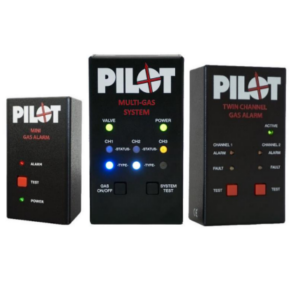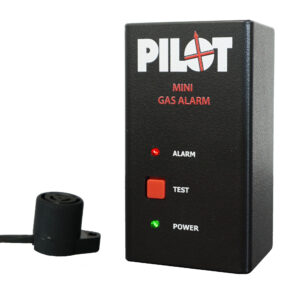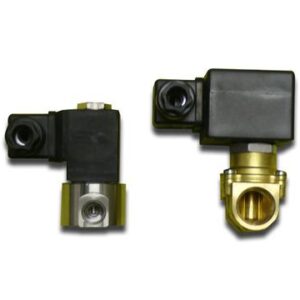Pilot Gas Alarms
Showing all 7 results
-
Multi-Channel Gas Alarm
£357.00 -
Pilot troubleshooting page
-
Replacement CO Sensors
£90.00 -
Twin Channel Gas Alarm
£138.00 -
Mini Gas Alarm
£100.00 -
Replacement Sensors
£30.00 – £35.00 -
Replacement Solenoid Valves
£77.00
Order direct over the phone (9.00 – 15.00 Mon – Thurs, 9.00 – 13.00 Fri) for fast delivery of items we hold in stock.
What are Gas Pilot Alarms?
Pilot Gas Alarms detect and alert users to the presence of Liquefied Petroleum Gas (LPG), which accumulates over time. If detected, it can be an indication of a leak in an enclosed environment, such as a boat cabin.
Since LPG is heavier than air, it tends to settle in low-lying areas where it can go unnoticed — posing a serious risk of fire or explosion.
Gas pilot alarms allow preventative measures to be taken to stop the leak before it becomes problematic, as well as responsive measures like ventilating the area and evacuating the vessel in extreme circumstances.
Why is an LPG alarm important?
LPG is commonly used for cooking and heating on marine vessels, but a leak in an enclosed space can be extremely dangerous. Since LPG can accumulate silently in bilges or underfloor spaces, it’s incredibly important to have a detection system in place. Without one, a small leak can escalate into a life-threatening hazard.
With a Pilot Gas Alarm installed, the system detects the leak, triggers an audible and visual alarm, and can even automatically shut off the gas supply using a compatible Pilot Solenoid Valve.
Our Pilot Gas Alarms
We offer a range of gas alarms to suit different vessel sizes and monitoring needs:
- Pilot Mini Gas Alarm – A compact single-sensor unit ideal for smaller boats or specific zones.
- Pilot Dual Gas Alarm – Features two LPG sensors to monitor multiple areas simultaneously.
- Pilot Multi Gas Alarm – A three-channel system for larger boats or more complex setups.
These include LED indicators for when an alarm state is triggered, as well as a manual Gas On/Off button to open and close the valve.
Pilot Solenoid Valves
Pilot solenoid valves are designed to integrate seamlessly with our gas alarm systems. When a leak is detected, the valve can be triggered to automatically shut off the gas supply, preventing further risk.
Features include:
- Available in 12V or 24V configurations
- Sizes: 1/4″ stainless steel or 1/2″ brass
- Manual override for maintenance or manual shut-off needs
Maintenance Advice
To ensure your gas alarm system remains effective:
- Test your sensors regularly using lighter fluid vapours
- Replace LPG sensors every two years as a precautionary measure
- Replacement sensors and solenoid valves are available for quick swap-outs
Our team at Envin Scientific is always available to advise on maintenance or help you select suitable replacement parts.
How to Install a Pilot solenoid valve?
For full installation steps, refer to the Pilot Gas Monitoring System User Manual, available for download on our site. Here is a quick run-through of the installation process:
- Install the solenoid valve as close as possible to the regulator, downstream from it
- Ensure correct gas flow using the valve’s clearly marked ‘1’ (input) and ‘2’ (output) labels
- Use a two-core power supply cable to connect the valve to pins 9 and 10 on the Gas Monitoring System circuit board
Need Help?
If you have any questions, need assistance selecting the right gas alarm or solenoid valve, or require support with installation and maintenance, please don’t hesitate to contact our knowledgeable team at Envin Scientific.








